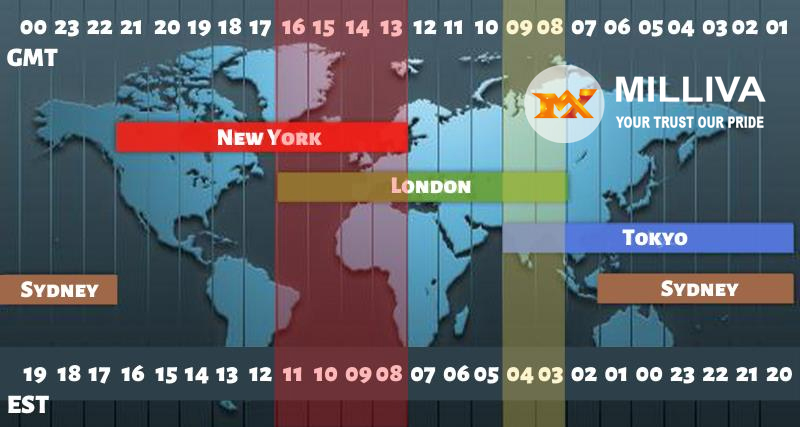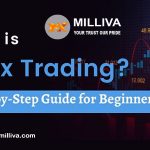Best and Worst Times For Trading in Forex

![]()
Forex Trading Hours Explained
Time to trade Forex : Forex is a designated online trading platform that has certain working hours framed. The market will work for 24 hours and 5 days a week with four-time frames is the Best time to trade forex for traders. Traders have to trade in these certain given hours, all jobs have their ups and downs, trading is not an exception there are certain times that have high chances of getting profit or loss. In this blog, we will give you a clear explanation of trading hours and the best time or worst time to trade.
The foreign exchange market in New York City opens at 5 p.m is the trading Time local time on Sunday. On Fridays, it closes at 5 p.m. and reopens 48 hours later to begin the new week. Traders from all around the world can participate in the FX market when it is open, although trading circumstances may differ.
Rather than a single primary exchange, the international currency market dominated by a global network of exchanges and brokers. The forex market’s trading hours defined by the opening hours of each participating country’s markets. While there are some overlaps in historical periods. The following usually regarded to be the most active for each region:
Time to Trade Forex
New York: 8 a.m. to 5 p.m. (EST)
Tokyo: 7 p.m. to 4 a.m. (EST)
Sydney: 3 p.m. to 12 a.m. (EST)
London: 3 a.m. to 11 a.m. (EST}
Asian (Tokyo) Time to Trade Forex
When liquidity restored to the currency (or FX) market at the start of the week, Asian markets are normally the first to witness activity. Tokyo’s stock exchanges, which are open from midnight to 6 a.m., unofficially represent activity in this part of the world. The United Kingdom’s Greenwich Mean Time (GMT) is a time zone (GMT).
During this period, however, several other important countries, such as China, Australia, New Zealand, and Russia, are present. It’s natural that the Asian session’s start and finish timings prolonged. Beyond the typical Tokyo hours, given how spread these markets are. Asian hours generally considered to be between 11 p.m. and 8 a.m. GMT, allowing for trading in these markets.
Europe (London) Time to Trade Forex
Just as the Asian trading session comes to a close. The European session kicks in to keep the currency market active. With a number of major financial markets represented, this FX time zone is very busy. London has had the honor of establishing the criteria for the European session thus far.
Due to the existence of other capital markets (such as Germany and France). Before the formal open in the United Kingdom. The trading period also prolonged, and the session’s end pushed later since volatility stays high until after the close. As a result, European business hours are typically 7 a.m. to 4 p.m. GMT.
North America (New York)
A trading session in North America is known as the North American Forex Session (New York). The Asian markets closed for many hours by the time the North American session begins. While European traders are just halfway through the day. The Western session is dominated by the United States, with contributions from Canada, Mexico, and South America. As a result, it’s no surprise that the session’s most dynamic and lively location is New York City.

Best Time to Trade
New York session
Because the New York and London sessions overlap the most, the GBP/USD cross may be quite liquid. The New York session is the final trading window to finish on the 24-hour currency trading clock. And it sees a lot of activity as traders try to extract every last bit of profit out of the previous trading session’s news announcements.
The New York session sees the biggest trading volumes for several USD crosses. Which accounts for a significant portion of the forex market. With USD accounting for 44.15 percent of all daily currency transactions.
London Session
The majors, such as the GBP/USD cross and the EUR/GBP cross. They are popular forex pairs to trade during the London session. This is especially true when the London and New York markets overlap. And as well as when the European session opens at about the same time as the London session.
Because there are fewer hours in which the two sessions are open concurrently. The Tokyo-London crossover has never been as crowded as the London-New York crossover.
Tokyo Session
The Tokyo session overlaps heavily with the Sydney session. With both centers open for five hours at the same time between 7 and 12 p.m. (EST). During the Tokyo session, prominent currency pairs include USD/JPY and EUR/JPY. During the cross between the Sydney and Tokyo sessions. There is a lot of liquidity and volatility in the AUD/JPY currency pair, which is one of the most volatile currency pairings on the market and the second most traded JPY cross after USD/JPY.
Afternoon Monday
Monday mornings could be a bad time to trade, but Monday afternoons are a different story. This is because the market begins to warm up, with increased trade volume. Although you shouldn’t anticipate the forex market to attain peak liquidity during this period. It’s still worth checking out when Monday afternoon arrives.
When Numerous Trading Sessions Occur at The Same Time
The biggest trading session is in London, but New York isn’t far behind. As a result, you may anticipate the session overlap to be a busy period with plenty of trading opportunities. Many experienced traders believe 14:00 GMT to be the best time to enter the market. Because it is around this time that London is coming to an end. And many traders are anticipating the transfer to New York. While market fluctuations might be choppy and unexpected during this period, the large swings provide more profit chances.
While not as important as London/New York. There is another overlap between Sydney and Tokyo. That happens between 12:00 GMT and 07:00 GMT, which is still a good period to trade.
When there is a Lot of Liquidity
Monday evenings are obviously busier, but the FX market doesn’t reach peak liquidity until Tuesday at the earliest. The currency market is most busy in the middle of the week, from Tuesday mornings until Thursday afternoons. If you’re looking for liquidity, try to confine the majority of your trading to the middle of the week, when trading activity is at its peak.
Worst Time to Trade
Sunday evening/Early Monday
There is nothing more slumber-inducing than the late Sunday/early Monday crossover when it comes to the worst time to trade FX. Everything stays quiet at this time, which in many ways serves as a reassessment phase, with many traders utilizing the crossover to prepare for the week ahead rather than actively trading. As the new week begins, the majority of investors avoid trading, therefore it’s reasonable to assume that you should do the same.
Holidays in the United States
National holidays are unavoidable, but the leisure time you have on these days should not be used for trade. Banks are one of the most powerful players in the FX market, thus their holiday shutdown is a warning indicator. The number of currency transactions carried out is substantially reduced when they are not open and running. This might result in a stagnant market or irregular price movement. In any case, it deviates from the average, thus it’s preferable to avoid trading entirely.
During important News Announcements
The forex market is influenced by financial reports, economic statistics, and political announcements, with traders tempted to trade when these events occur. While doing so may place you in the middle of the action, it is recommended that you remain away unless you have a strong grasp of how to trade the news. Updates, statistics, and reports may have a surprising impact on the currency market, especially when they arrive suddenly. A forex economic calendar may help you remain on top of significant news releases so you don’t get caught off guard.
During Periods of Unusual Price Movement
There can be instances when a forex pair exhibits unusual price behavior for no apparent cause. Random fluctuations may give the market a thrilling sense, but they usually result in a rough trading landscape. As a result, understanding what is generating price movements and market mood may be incredibly challenging. As a result, when unexpected price movement happens, it’s advisable to wait it out until the strange market behavior passes.
When Liquidity is Low in Asian Sessions Especially Towards the End-of-day Crossover Time
Low liquidity levels, which afflict Asian sessions, are a clear warning sign. Because the volume of resources moved during Asian market sessions is frequently modest, the typical pip movements are insufficient to cover the Asian currencies’ wide spreads. This is especially true as the day draws to a close.
Importance of the FX Market’s Trading Times
The trading timings of the forex market are essential because, although being open 24 hours a day, the market is more active during various sessions, or when there is a crossover between two sessions in different geographic regions, resulting in narrower spreads.
However, this increased activity is often limited to currencies that are traded in both locations of a crossover – for example, when both the European and US sessions are active between 8am and 11am, GBP/USD sees higher trading volume (EST).
The major institutions, such as investment banks, are most active at the start of each trading session, and this is frequently when significant economic data for that session is released.
What Effect do Trading Hours and Time Zones have on Specific FX Pairs?
An overlap will have a greater impact on some forex pairings than others. The EUR/USD and GBP/USD, for example, will witness higher activity as New York settles in but London remains busy.
When at least one of a forex pair’s markets is active, it usually has more liquidity – USD/JPY will be busiest during the Asian or US sessions, but less so during the European session. The EUR/JPY pair will be more active at the start of the European day, whereas the EUR/USD pair will be less active during the Asian session, and so on.
Regardless of the pair you trade, whether it’s one of the most popular or one of the more “exotic,” it’s critical to know what financial data is due to be released and which sessions are likely to be the most volatile. Traders can then choose to trade during either the volatile or tranquil times, each with its own set of pros and drawbacks.
There is no such thing as a “perfect” or “optimal” moment to trade forex, as there is with so many other aspects of trading. However, there will be periods when trading is better than others, or when a specific trading strategy or currency pair is more suited. By creating an IG trial trading account, you can figure out what hours work best for you and your trading style. Before risking real money on the live markets, you’ll be able to experiment with $10,000 in virtual funds.
Bottom Line
In summary, from education to trading strategy development, forex trading success is unquestionably based on a foundation of devotion and execution. Furthermore, time plays a vital part, maybe more essential than most people think, allowing you to fully choose your moments. You now have a strong grip on when you should and shouldn’t trade forex, thanks to the information provided above.

Visit us : www.milliva.com





